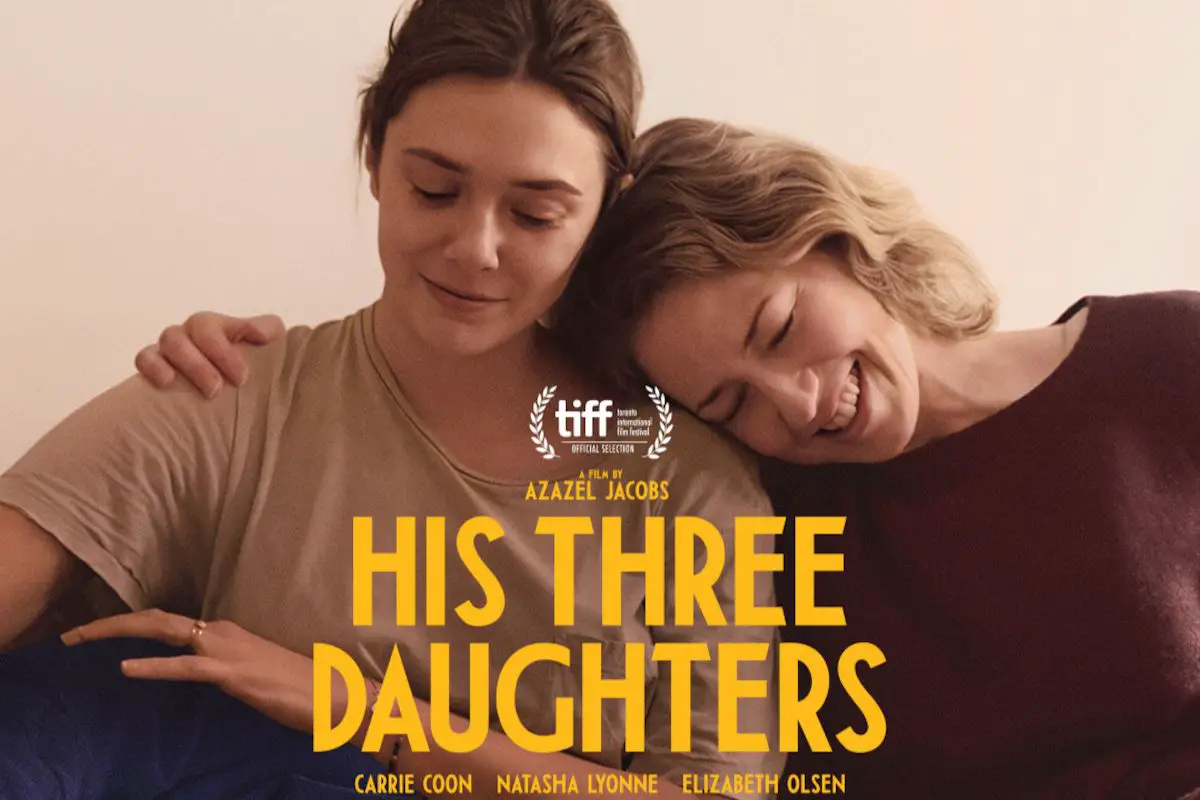His Three Daughters, directed by Azazel Jacobs, explores the complexities of family, grief, and the strained dynamics between siblings during a time of crisis. The film centers around three sisters who reunite in their father’s Manhattan apartment as he receives hospice care, creating a confined setting that intensifies their emotional and relational struggles. This review delves into the movie’s strengths, its portrayal of familial bonds, and whether it’s worth a watch.
Plot Overview: A Familiar Scenario with a Fresh Twist
The film’s premise—siblings coming together as a parent faces imminent death—is a well-worn theme in cinema. However, Jacobs infuses this familiar story with a distinct emotional depth and complexity. The narrative unfolds entirely within the confines of their father’s apartment, capturing the claustrophobic reality of the sisters’ situation. This choice amplifies the tension, drawing viewers into the immediacy of their interactions as they grapple with their conflicting emotions.
The Sisters: Diverse Personalities and Perspectives
Each of the three sisters brings a unique dynamic to the story. Katie, played by Carrie Coon, is the responsible, emotionally attuned sibling who manages the daily care of their father. Her role as the caretaker often puts her at odds with her sisters, highlighting the emotional toll such responsibility can take.
Christina, portrayed by Elizabeth Olsen, is the seemingly perfect sister, struggling to balance her own family life with the demands of her father’s declining health. She tries to help but often finds herself overwhelmed, revealing cracks in her composed exterior as the reality of her father’s condition becomes unavoidable.
Natasha Lyonne’s Rachel, the family’s black sheep, provides a stark contrast. Detached from her siblings’ responsibilities, she copes by betting on sports and indulging in distractions. Her aloofness and defiance create friction, but also bring unexpected moments of levity to the otherwise heavy narrative.
Depth in the Details: Character Development and Emotional Honesty
Jacobs masterfully avoids the pitfalls of melodrama by steering clear of flashbacks and backstory exposition. Instead, the film focuses on the sisters’ current struggles, using their present interactions to reveal their history and individual pain. This approach allows each character to express their vulnerabilities and frustrations, making their emotions feel raw and authentic.
The film’s reliance on monologues—each sister expressing her inner turmoil through candid, often heart-wrenching dialogue—adds layers to their personalities. For instance, Katie’s desperate pleas for Rachel to take life seriously and Christina’s veneer of control crumbling under pressure offer profound insights into their characters. Rachel’s transformation from seemingly indifferent to a more nuanced, relatable figure is particularly compelling. Lyonne’s performance, blending humor with genuine pain, stands out as a highlight, embodying the complexities of someone struggling to stay afloat amidst chaos.
Creating an Atmosphere: Visuals and Cinematic Style
The film’s visual style complements its narrative intimacy. Jacobs employs static shots and limited camera movement, reinforcing the feeling of entrapment and forcing viewers to focus on the characters’ emotional states. The static nature of the scenes echoes the sisters’ inability to escape their circumstances, both physically and emotionally.
Despite the somber themes, the film is punctuated with moments of humor and warmth. The sisters’ banter and subtle comedic exchanges provide a respite from the intensity, reflecting the dual nature of grief—where moments of levity and despair coexist. This balance prevents the film from becoming overly bleak and instead offers a realistic portrayal of how families cope with loss and tension.
Exploring Sibling Dynamics: Authenticity in Conflict and Connection
The strength of His Three Daughters lies in its unflinching portrayal of sibling relationships. The film captures the ebb and flow of familial bonds, where love and resentment, support and rivalry, exist in tandem. The sisters’ interactions, whether in heated arguments or quiet, reflective moments, feel authentic and relatable.
Jacobs avoids caricaturing the sisters, instead presenting them as multifaceted individuals grappling with their own flaws and limitations. This realism extends to their conflicting responses to their father’s illness—each sister’s reaction is shaped by her personal history and unresolved issues, adding depth to their characters.
Conclusion: A Thoughtful Exploration of Love and Loss
His Three Daughters is not a groundbreaking film, but it is a deeply moving and honest exploration of family dynamics and grief. Jacobs’ attention to the minutiae of everyday life—like arguments over refrigerator space or discussions about Do Not Resuscitate orders—grounds the film in reality, making the sisters’ journey toward acceptance and understanding feel earned and genuine.
The film offers a poignant look at how siblings navigate the complex terrain of love, guilt, and responsibility. It’s a compelling narrative that resonates with anyone who has experienced the intricacies of family relationships. For those seeking a thoughtful, character-driven story, His Three Daughters is certainly worth watching.

